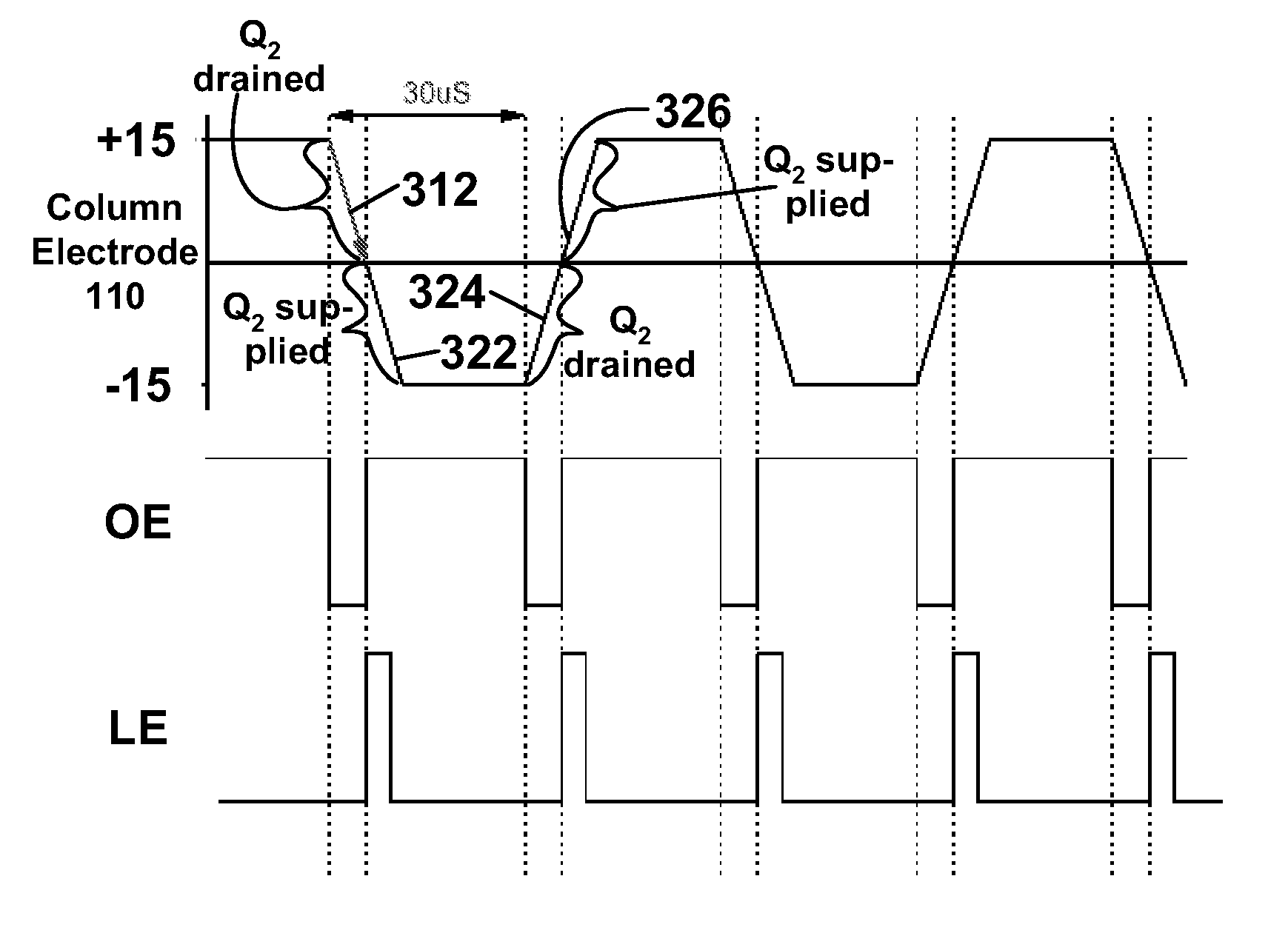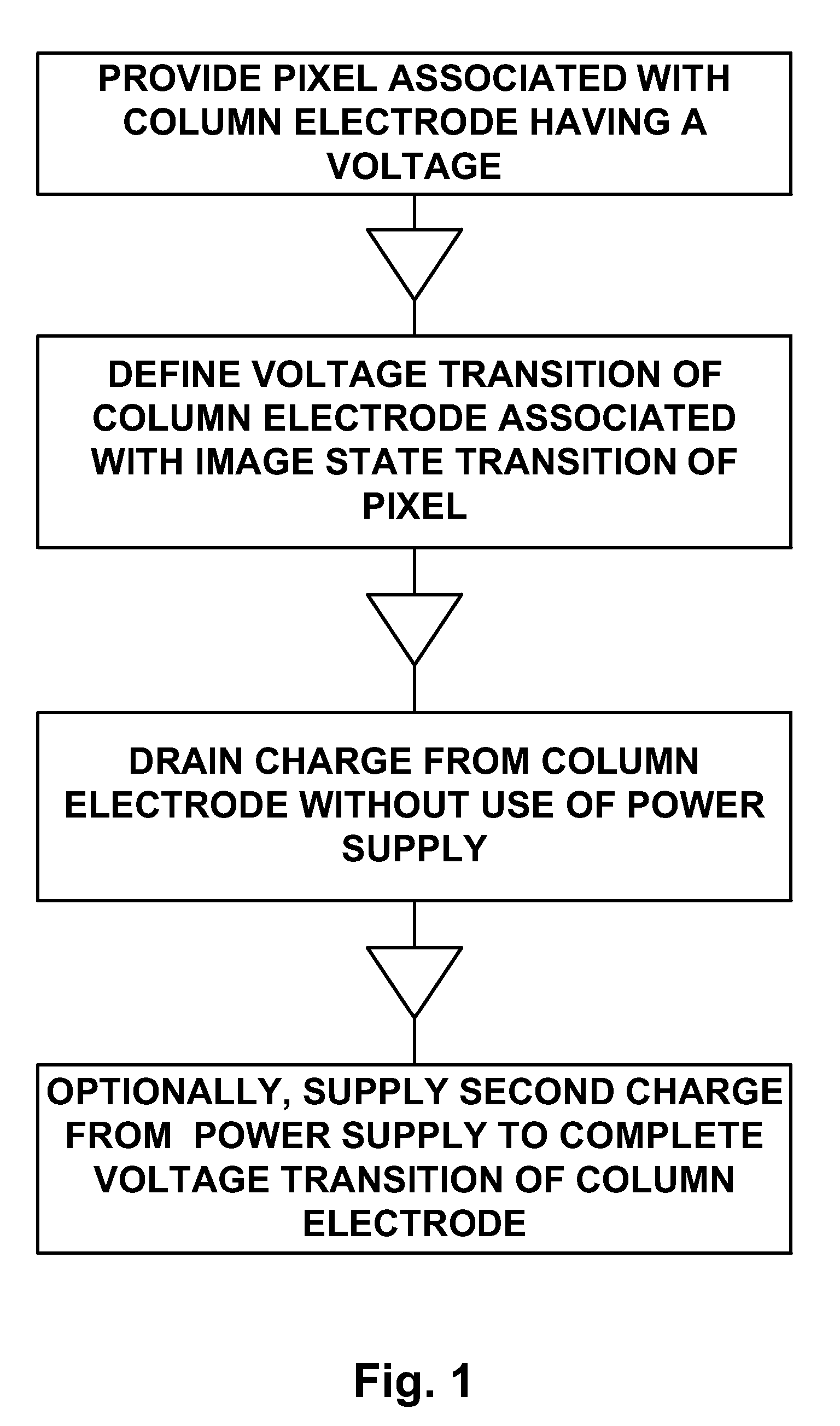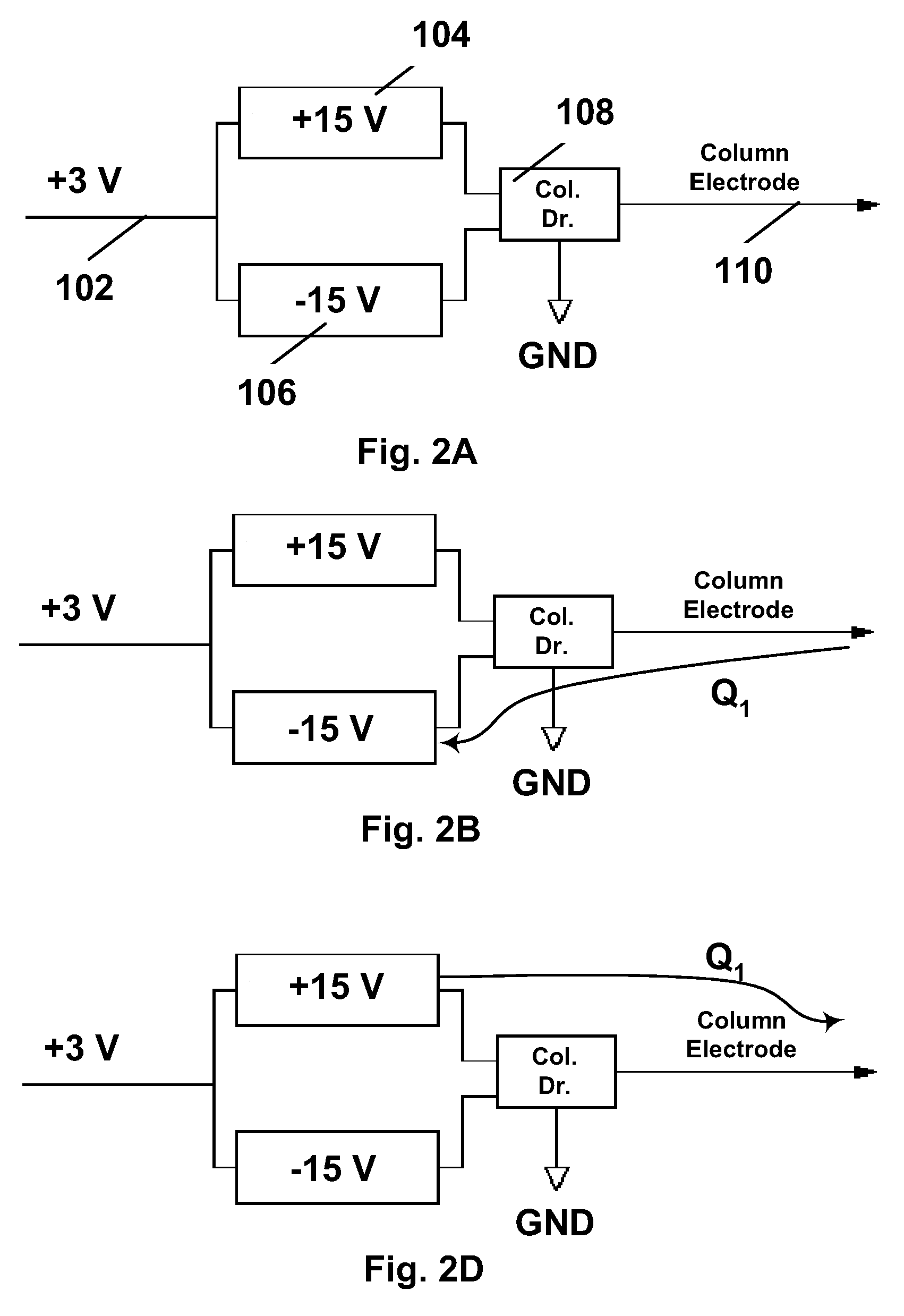Electro-optic displays, and methods for driving same
a technology of electrooptic displays and driver connections, applied in the field of large-area electrooptic displays, can solve the problems of inadequate service life of these displays, unable to meet the needs of users, and gas-based electrophoretic media are susceptible to the same types of problems, so as to achieve the effect of relatively small overall cost of providing driver connections for every pixel
- Summary
- Abstract
- Description
- Claims
- Application Information
AI Technical Summary
Benefits of technology
Problems solved by technology
Method used
Image
Examples
Embodiment Construction
[0081] As already mentioned, the present invention has three main aspects, namely (a) two-step voltage change methods, and apparatus for carrying out such methods; (b) flexible large area displays; and (c) display module driver devices, and display assemblies containing such devices. These various aspects of the present invention will be described separately below, although it should be understood that a single display or driving method therefore may make use of more than one aspect of the present invention. For example, a DMDD assembly of the invention might effect a two-step voltage change method of the invention and might be used to drive a flexible large area display of the invention.
[0082] Two-Step Voltage Change Methods, and Apparatus for Carrying Out Such Methods
[0083] As already mentioned, this invention provides a method two-step voltage change method (TSVCM) for driving an electro-optic display having an electro-optic medium, a pixel electrode capable of applying an elec...
PUM
| Property | Measurement | Unit |
|---|---|---|
| voltage | aaaaa | aaaaa |
| column capacitance | aaaaa | aaaaa |
| charge | aaaaa | aaaaa |
Abstract
Description
Claims
Application Information
 Login to View More
Login to View More - Generate Ideas
- Intellectual Property
- Life Sciences
- Materials
- Tech Scout
- Unparalleled Data Quality
- Higher Quality Content
- 60% Fewer Hallucinations
Browse by: Latest US Patents, China's latest patents, Technical Efficacy Thesaurus, Application Domain, Technology Topic, Popular Technical Reports.
© 2025 PatSnap. All rights reserved.Legal|Privacy policy|Modern Slavery Act Transparency Statement|Sitemap|About US| Contact US: help@patsnap.com



